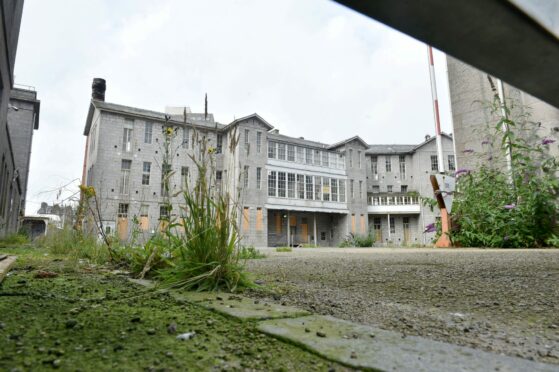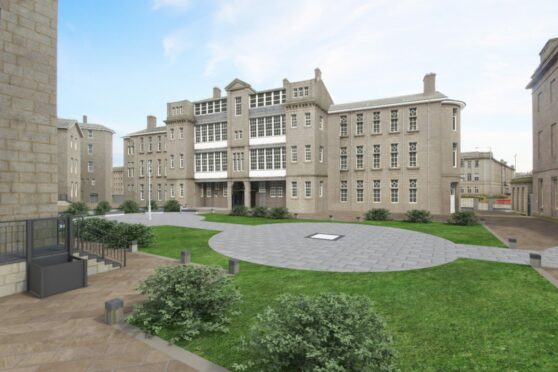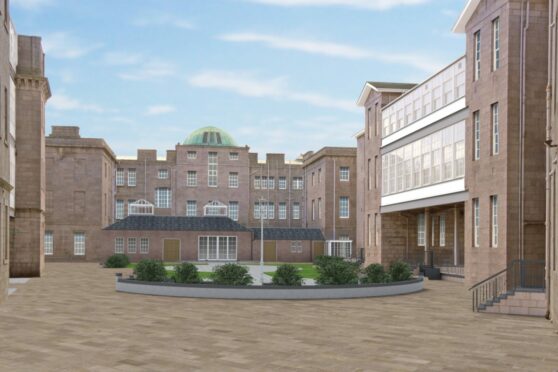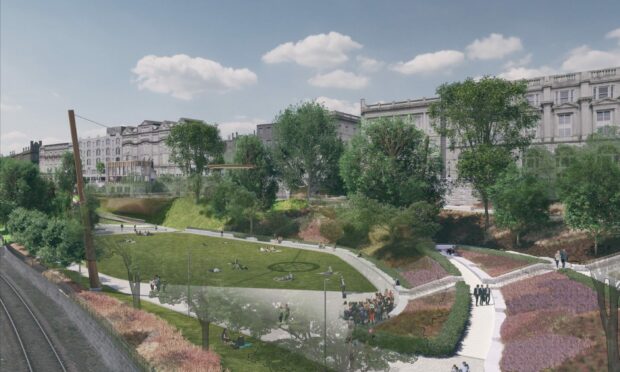The property kingpin who owns Woolmanhill Hospital has hit the pause button on £10 million plans to create a hotel on the site.
The historic Aberdeen medical facility opened in 1741 and was the north-east’s only infirmary for the next two centuries.
As its days in operation came to an end five years ago, developer Charlie Ferrari bought Woolmanhill.
His CAF Properties firm soon unveiled proposals to transform the A-listed Simpson Pavilion building into a 52-bedroom luxury resort.
The development was to become a new sister hotel to The Scotsman in Edinburgh.
Meanwhile 27 serviced suites, 30 residential apartments and 10 affordable homes were also pencilled in for other vacated buildings.
Hospitality in turmoil
But last June, signs of trouble emerged.
Mr Ferrari withdrew plans to create the apartments earmarked for the Stephen Pavillion, facing John Street.
He blamed the oil downturn and economic problems caused by the pandemic.
Instead, the developer said proposals were being drawn up for another 40 hotel rooms.
But a question mark now looms over the future of the site following a bruising spell for the hospitality industry.
Last October, the nearby Hilton Garden Inn closed for good and the same operator’s Treetops and Beach Boulevard venues were shuttered during 2020.
They are far from the only Covid casualties in the city, with the Mariner on Great Western Road closing and the Ardoe Hotel going bust in November – though it has since reopened.
Scroll back and forth to see how the historic hospital building could be brought back to life as a hotel –
Owner speaks on Woolmanhill hotel plans
Mr Ferrari remains eager to convert Woolmanhill – but told us the hotel plans are being placed on the backburner until the end of next year.
At that time, the “viability” of the project will be reviewed.
He said: “We have not been able to start on site due to the Covid scenario.
“But we are working hard behind the scenes trying to come up with different uses that might assist us in making as quick a start as we can.
“Our permission for residential properties is still valid, and we could get some of it turned into flats as soon as possible.
“And then we will review the hotel proposal at a later time, in late 2022, to see what the position would be then.”
Woolmanhill hotel could hinge on city regeneration
Mr Ferrari added: “We will see what the economy is like by the end of next year and see if the hotel is valid.
“It’s a great location and, as far as we are concerned, other developments by then could help it.
“Look what’s happening at Union Terrace Gardens, His Majesty’s Theatre and Aberdeen Art Gallery.
“It makes sense for us to keep calm and assess things on a weekly basis, which is what I’m doing.
“We are always looking at the project in detail with a view to starting as soon as we can.”
Site safe while work is on hold
Mr Ferrari moved to allay any fears over the safety of the building during the hold-up, after youngsters broke in to film a Youtube video last summer.
“We have got lots of security cameras, and the place is well and truly enclosed,” he said.
“We have proximity sensors at the gate which go off straight away, and local G4S security guys are in attendance within minutes.
“As for the structure of the building, the gutters and pipes are cleared every quarter.
“We are trying to keep the building in as good a condition as possible, we look at it on a monthly basis to make sure it is well maintained.”
‘Wait and see approach is wise’
Independent hospitality expert, Andrew Martin, believes delaying the project is for the best.
Mr Martin, a member of the Aberdeen City and Shire Hotels Association and a former RGU tourism lecturer, believes some of the problems blighting the sector may have eased by next year.
He said: “There is a strange phenomenon in the hospitality and tourism sector at the moment, where we aren’t able to deliver some services because of a shortage of labour.
“We have had business return in some parts of the local economy, some places have bounced back strongly in terms of demand.
“But there are problems with labour, the same as in other industries.
“Meanwhile, the cost of building materials is at an all-time high.
“However there is a feeling this could get better next year, so I fully understand the situation with Woolmanhill.
“It is sound business sense to adopt a ‘wait and see’ approach.”
Storied past of hospital
Woolmanhill became Aberdeen Royal Infirmary by decree of George III in 1773.
It was the home to important medical figures such as Professor Sir Alexander Ogston, who discovered the Staphylococcus – the germ that continues to produce infections, abscesses, and sepsis to this day.
The Simpson Pavilion was built between 1832 and 1840, having been designed by the city’s most notable architect Archibald Simpson.
It is one of four listed buildings in the complex.
NHS Grampian was given permission to close it in 1999 and services migrated elsewhere over the next several years.




